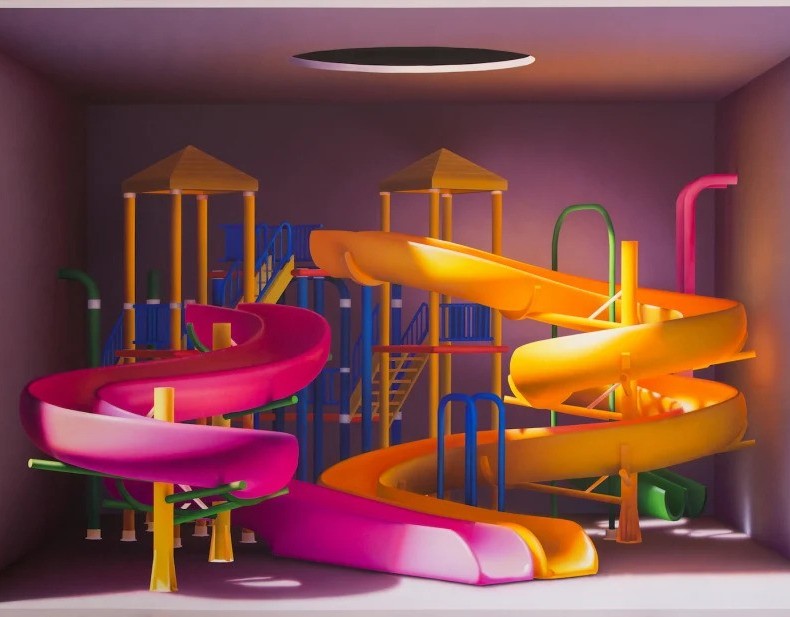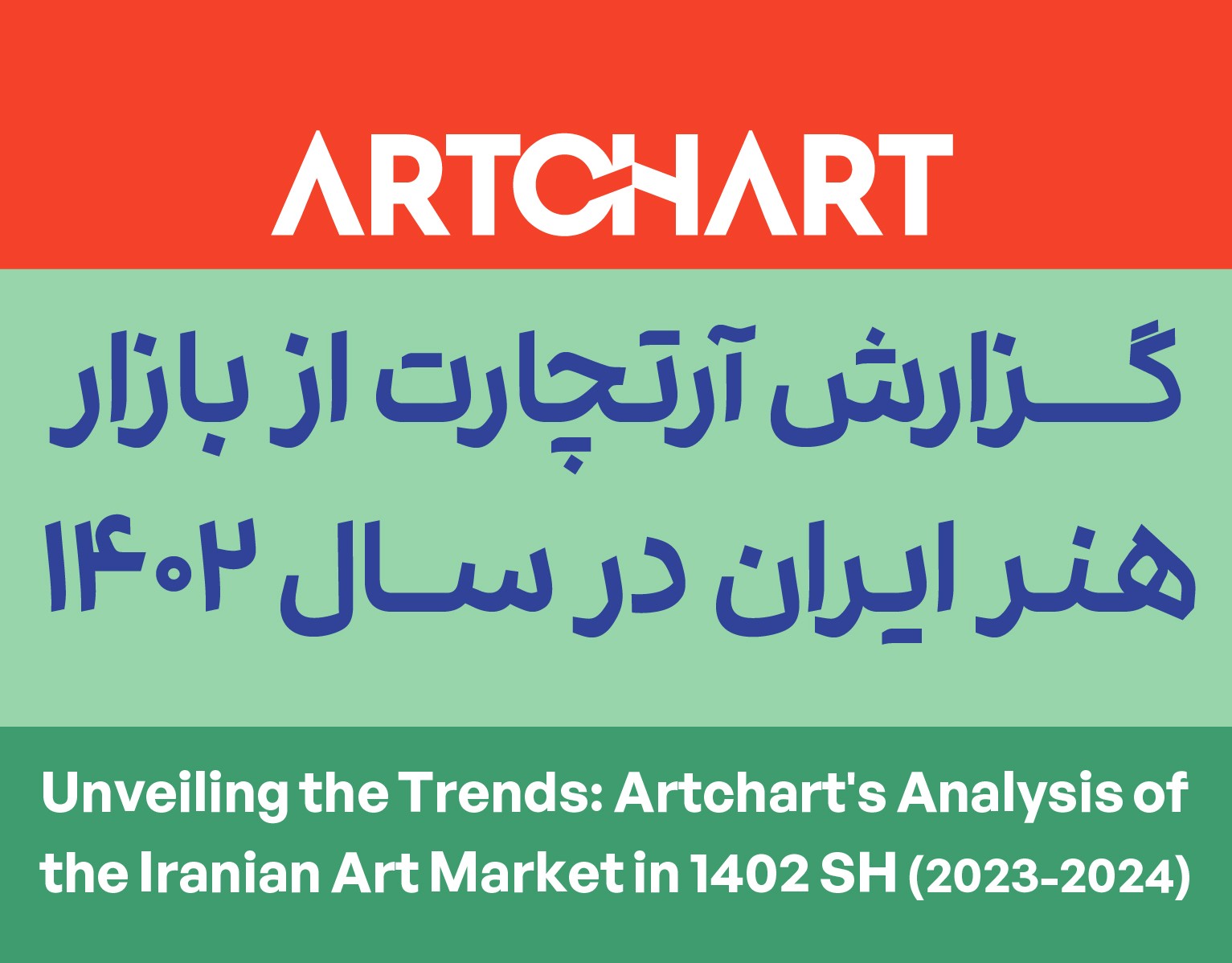In 2006, Middle Eastern art became intertwined with the global art scene. Throughout the year, significant art milestones unfolded one after another. Christie’s hosted the first-ever art auction in the Middle East, marking a pivotal moment. Concurrently, the Gulf International Art Fair, later known as Art Dubai, kicked off, while the British Museum revealed plans to build a collection of contemporary Middle Eastern art. Sotheby's and Bonhams followed Christie's into the region, but it's worth noting that Christie's remains the sole auction house to maintain a presence in Dubai since that time.
From the early years of auctions in the region, Iranian artists' works quickly became bestsellers and occasionally the most expensive pieces in the Middle Eastern Art – The example of this is Parviz Tanavoli's sculpture named "The Wall (Oh Persepolis)" which fetched $2.8 million in 2008 at a Christie's auction in Dubai. This recognition led to Iranian art being distinguished from the broader category of Arab art, drawing significant interest from museum owners and curators.
Some critics argue that the introduction of Iranian artists into the auction scene has pushed their art toward market-driven trends, focusing heavily on specific genres like pop art and calligraphy. This shift has brought recognition to young artists such as Afshin Pirhashemi and Saeed Ahmadzadeh in subsequent years. However, this influence has not had a lasting impact on the broader trajectory of contemporary Iranian art, as younger generations continue to embrace globalism and internationalism.

After the year 2009, the extensive US sanctions imposed on Iran have significantly restricted the connection of the Iranian art market with the international art network. As a result, gallery owners and artists have had to adapt their marketing strategies. Many galleries have shifted towards online exhibitions to navigate these constraints, while some artists have explored non-traditional mediums like digital and video art to circumvent logistical and banking challenges.
In response to these challenges, some art institutions have sought solutions by establishing platforms outside of Iran. Khaak and Etemad Galleries, for example, have set up in Dubai, whereas Shirin Art Gallery has expanded to New York, a major global art hub. Additionally, the sanctions have prompted a migration of artists to the UAE, which offers a more secure environment for collaborating with international dealers. Artists such as Afshin Pirhashemi and the Dubai-based group consisting of Rokni Haerizadeh, Hessam Rahmanian, and Ramin Haerizadeh by moving to Dubai have established connections with galleries like Isabel van den Eynde and The Third Line, demonstrating the adaptability and resilience of Iranian artists in the face of geopolitical challenges.
It's worth noting that the migration of Iranian artists extends beyond neighboring countries, with major art centers like New York, London, and Paris being popular destinations for young Iranian artists. By relocating to these areas, these artists have positioned themselves outside the confines of the Middle Eastern Modern & Contemporary Art umbrella, garnering attention from international galleries.
For instance, in ArtTactic's 2018 list of the top 20 young artists from the MENA region, five Iranian artists were featured, with only one residing in Iran. This highlights the growing interest of international galleries in diaspora or bi-national artists. Further examples include Mehdi Ghadyanloo, Maysha Mohamedi, and Ali Banisadr, who have collaborated with prestigious galleries such as Gagosian and Pace. These artists were also recognized as the top three best-selling young artists among the top 20 artists in the Iranian art market, as revealed in Artchart's recent survey of the Iranian art market in 1402 SH, a topic we will delve into further below.
Top Three Best-selling Young Iranian Artists in the year 1402 SH
In the 1402 SH ranking of top-selling Iranian artists, Ali Banisadr is positioned 6th, Maysha Mohamedi 13th, and Mehdi Ghadyanloo 19th. These artists, who were born in the 1350s and 1360s SH, have predominantly sold their works in the United Kingdom and the United States, in auctions distinct from those focused on modern and contemporary Middle Eastern art. Specifically, 72% of Banisadr's works have been sold in the UK, all of Mohamedi's works have found buyers in the US, and 87% of Ghadyanloo's works have been auctioned in the UK (refer to Table 1).
.jpg)
Among these three young artists, Ali Banisadr, with a more established presence in auctions and a more stable market, achieved the highest total sales and also a 100% sales rate, earning $604,000. $241,000 of the total $604,000 earned in auctions belongs to Banisadr's artwork "Hashashin" (1387 SH), which was auctioned at Sotheby's Contemporary Art Sale in New York and secured a place among the top ten highest-selling Iranian artworks in 1402 SH (refer to Table 2).

for the Top Three Best-Selling Young Iranian Artists in the Year 1402 SH.

of the Top Three Best-Selling Young Iranian Artists in 1402 SH.
Mehdi Ghadyanloo, included in the roster of the top 20 highest-selling Iranian artists globally, has proclaimed himself as the youngest best-selling artist in 1402 SH. Ghadyanloo's rise in the secondary market stems from the successful sale of his piece "Exploring the Sun" (1399 SH), fetching $207,000 at Christie's evening auction in Shanghai and ranking among the most expensive Iranian artworks sold in 1402 SH.
.jpg)
.jpg)
Maysha Mohamedi, an Iranian-American artist residing in California, has emerged as a fresh face in the Iranian art scene with her debut in auctions in 1402 SH (2023). During this period, Mohamedi amassed a total sale of $348,000 with an auction success rate of 83%. Of this total, $151,000 comes from her artwork "Birdie on the Back of a Sleeping Tiger" (1401 SH), which was sold at Christie's in New York with a 202% increase from the average sales rate at the post-war auction. Notably, Mohamedi's painting was sold at the exact same price as an artwork by Manoucher Yektai, a renowned Iranian-American artist.
The Journey of Young Artists' Works into the Auction Circuit
The typical route for artwork entering the market begins in the solitude of the artist's studio. From there, the piece often moves to a gallery, where, in an ideal scenario, it catches the eye of collectors or cultural institutions. This progression allows the artwork to gain value as it makes its way through various esteemed platforms.
However, the dynamics of today's art market are shifting. A new trend has emerged where artworks might bypass the gallery entirely, moving directly from the studio to the auction house. This approach became notably prevalent before the economic downturn in Iran in 1387 SH. During this period, many Iranian artists opted to send their creations straight to auctions, effectively skipping the traditional gallery exposure. This shift disrupted the usual incremental price appreciation, leading to some artworks selling at unexpectedly high prices—figures potentially unrepeatable in different economic circumstances.
.png)
Focusing on specific examples, such as the artists Banisadr, Mohamedi, and Ghadyanloo, whose works were auctioned in the Iranian year 1402, reveals certain trends. With the exception of Banisadr, most of the auctioned works from these artists were produced later in their careers. For instance, Ghadyanloo had 15 works at auction, all created between 1394 and 1399 SH; Mohamedi had six works auctioned that she created between 1399 and 1402 SH. Banisadr's pieces, however, which numbered seven at auction, were crafted earlier, between 1387 and 1397 SH. Notably, the most expensive works of Ghadyanloo and Mohamedi, dating from around 1399 SH, sold for higher-than-average prices, underscoring a potential reevaluation in how art value is assessed in contemporary markets.
References
- Sreberny-Mohammadi, L. 2021. The Emergence of an Auction Category: Iranian Art at Christie’s Dubai, 2006–2016. Arts 10(2). https://doi.org/10.3390/arts10020035
- Grigor, T. & Moussavi-Aghdam, C. 2019. Tehran: A Conversation with Iranian Gallerists. Art Journal 77(4). Retrieved on April 23, 2024 from http://artjournal.collegeart.org/?p=10857
- Rafiei Vardanjani, A. 2020. United States Economic Sanctions on Iran and Their Impacts on the Middle Eastern Art Market. Arts, 9(4). https://doi.org/10.3390/arts9040132






